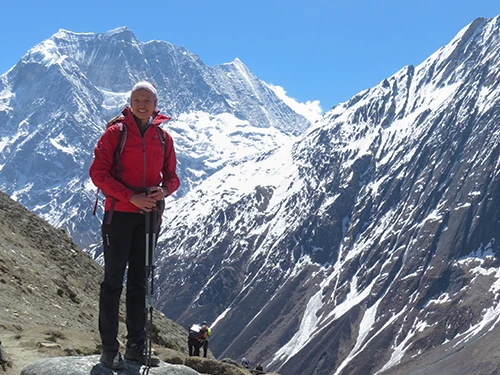Mount Everest isn’t just the tallest mountain in the world, it is a global icon. At 8,848.86 meters (29,031.7 feet), it stands above everything else on Earth, straddling the border between Nepal and China. But for most people, it’s not the summit that matters. It is the journey to the foot of the giant.
That journey is the Everest Base Camp (EBC) trek. It’s one of the most famous hikes in the world, not because it’s the hardest, but because of what it represents. You’re walking in the footsteps of mountaineering legends, through the heart of the Khumbu region, home to the Sherpa people and some of the most dramatic landscapes on the planet.
The 14 days Everest base camp trek is a journey that changes you. It’s an opportunity to truly connect with nature, stand face-to-face with some of the world’s most stunning mountains, and walk the same paths as legendary mountaineers, from crossing swinging suspension bridges over icy rivers to wandering through forests bursting with rhododendron blooms, and resting in cozy teahouses alongside friendly Sherpas. Every step tells a story of human strength and resilience.
Everest Base Camp Trek journey from Kathmandu to Everest Base Camp is a spectacular one that blends sensational vistas, intriguing exchanges of culture, and the immense joy of getting to Mount Everest's iconic base camp. It's the adventure of a lifetime that will drive you beyond your comfort zone and give you some of the most invaluable memories of life. Each phase of the Everest Base Camp Trek offers sensational landscapes and an introduction to the lively Sherpa culture in Nepal's incredible Khumbu region.
Several spectacular mountains, including Nuptse, Lhotse, Makalu, Ama Dablam, Mera Peak, Peak 38, Island Peak, Mount Everest, and many more, can be encountered in the Khumbu region. The terrain is difficult, and reaching the base of the tallest mountain in the world is an extraordinary accomplishment. The starting point of the world's deepest glacier, Khumbu Glacier, is also observable from the Everest Base Camp.
The Everest Base Camp Trek is an average to difficult journey that demands a decent level of fitness and willpower to reach a maximum height of 5,545m. After landing at the airport in Lukla, the long hike in the Khumbu region of Nepal commences. Before you get to Namche Bazar, you will pass by classic Sherpa settlements, the colossal Sagarmatha National Park forests, sensational scenery, and multiple suspension bridges, including the renowned Hilary Bridge. You will be astounded by the atmosphere there, which is also your first acclimatization stop and the last influential market before you head further to the North.
You will travel with professional guides who watch out for your safety and provide pertinent details about the area. The teahouse lodges along the trail provide cozy accommodation and delicious dining so you may rest and reload for your journey the next day. Words cannot depict how beautiful it is to stand at base camp, surrounded by lofty peaks and the Khumbu Icefall. The trek also delivers chances to visit colorful monasteries, see the glorious dawn from Kala Patthar, and interact with generous Sherpa communities.
At a height of 12,687 feet, the famous Tengboche Monastery on the route is located in a quiet, tranquil setting that is excellent for meditation and blessings. The grandeur of this monastery is further enhanced by Mt. Ama Dablam's backdrop. Once more, it is time for acclimatization since you will have reached a high altitude by the time you arrive in Dingboche. When you reach Lobuche, the trek will continue, taking you to higher ground via the Thukla pass until you reach the Khumbu Glacier. You must walk to Gorak Shep first, leave all your belongings there, and resume up the Khumbu Glacier until you get to the EBC. We will take you to Kala Patthar summit (5,555m) the next morning so you can relish the sensational view of Everest and its neighboring peaks. Mt. Everest won't presumably ever be visible from this close-up.
At Abound Holidays, we see this trek as more than a challenge. It is a chance to break free from everyday life and dive into something unforgettable. The trail is packed with rich culture, beautiful landscapes, and real physical tests that reward you in ways you might never expect. Whether this is your first trek or you’re a seasoned explorer chasing a new adventure, the Everest base camp trek speaks to something deep inside everyone who takes it on.
Every phase of the Everest Base Camp Trek 14 days offers countless chances to experience the grandness of nature and welcome the essence of adventure. You can access all the necessary information, such as the Everest base camp trek cost, the Everest base camp trek itinerary, packing lists, and more, below. The adventure will have a significant impact on your soul, whether you are an experienced backpacker or a novice. Prepare to set out on the Adventure of a lifetime and take part in the Everest Base Camp Trek with Abound Holidays.
Detail | Description |
Trip Duration | 14 Days |
Starting Point | Kathmandu |
Trek Start/End | Lukla – Lukla |
Trek Region | Khumbu (Everest Region) |
Maximum Elevation | Kala Patthar – 5,545m |
Accommodation | Local teahouses & mountain lodges |
Meals | Full Board (Breakfast, Lunch & Dinner) during trek |
Transportation | Kathmandu–Lukla flights both ways |
Group Size | 2 to 12 trekkers |
Trek Difficulty | Moderate to Challenging |
Best Seasons | Spring (Mar–May) & Autumn (Sep–Nov) |
Why Everest Base Camp Trek is a Must
Rich Sherpa Culture
One of the main attractions of the EBC Trek is the chance to experience the unique Sherpa culture that is prominent in the Khumbu region. The Sherpas are widely recognized for their mastery in mountaineering as well as their capability to endure in the demanding alpine atmosphere. Through interactions with the people in the Sherpa community, trekkers can get an understanding of their way of life, affection for their forefathers, and a profoundly established sense of togetherness. The Sherpa culture is a beautiful richness of morals, traditions, and generous hospitality that enriches the Everest Base Camp Trek and makes an indelible mark on trekkers' hearts.
Tengboche Monastery
Tengboche is undoubtedly one of the most captivating places on earth, with towering snow-capped mountains on all sides. Many of the well-known photographs of Nepal taken by visitors feature Tengboche, frequently with Mt.Ama Dablam in the background. The biggest and most well-known monastery in the Everest region is also known as Dawa Choling Gompa. The monastery is known for its blessings and generosity and has constantly managed to rise from the ruins. Additionally, famous are the monastery's beautiful interior and spectacular surroundings.
Kala Patthar Viewpoint
At an altitude of 5,545 meters, Kala Patthar is more than simply a viewpoint. It is an excellent location for people who want to witness Mount Everest up close. The fact that Mount Everest cannot be seen from EBC truly amazes most visitors. This prominent viewpoint rewards adventurous visitors with jaw-dropping panoramas of splendid mountains, such as the famous Everest (Chomolungma), Pumori, and Nuptse. Kala Patthar flares into a fantastic painting of golden colors when the sun's first beams touch the snow-capped peaks, brightening the entire landscape.
For more in details, learn on blog "Top 10 Reasons to Do Everest Base Camp Trek"
Best Time to do the Everest Base Camp Trek
The weather becomes more constant as the temperature steadily increases during the spring. Exceptional visibility is made possible by the clear skies and cozy temperatures, providing sensational sceneries of the Himalayan ranges. While the skies are usually sunny in autumn, temperatures tend to be favorable during the day and cool at night, with uninterrupted panoramas of the mountains.
Spring (March to May) and Fall (Sept–Nov) are the best seasons for the Everest Base Camp Trek because these seasons provide superb visibility and sensational views of the landscapes, guaranteeing an incredible experience and adventure of a lifetime. Such seasons offer the best skies, consistent weather, and the magnificent scenery of the mountains.
Everest Base Camp Trek Cost
At Abound Holidays, we believe your trekking experience should be stress-free and unforgettable from the moment you land in Nepal to the time you reach Everest Base Camp and return home with lifelong memories. Here’s everything that’s covered in your trek cost, so you can focus on what really matters: enjoying the journey.
Comfortable Accommodation from Start to Finish
- You’ll spend 2 nights in a cozy 3-star hotel in Kathmandu, complete with daily breakfast. If you’d prefer your own room, we’re happy to arrange that for a little extra.
- During the trek, you’ll stay 11 nights in locally run teahouses, sharing a twin room with a fellow trekker. These mountain lodges offer basic but warm hospitality. In places like Lukla, Phakding, and Namche, you’ll even have rooms with attached toilets.
Nutritious Meals & Safe Drinking Water
- All your meals during the trek are included, that’s 11 breakfasts, 11 lunches, and 11 dinners. Each meal also comes with a hot drink (like tea, coffee, or hot lemon).
- We like to keep it fresh, so you’ll get seasonal fruits each day as a healthy boost.
- A special farewell dinner is included on your last night in Nepal. It is our way of saying thank you and celebrating your achievement.
- No need to buy bottled water. we provide safe, purified drinking water throughout the trek using filters or purification tablets.
Smooth Transportation
- From the airport to your hotel and back, we take care of all ground transfers. Both for international arrival and domestic travel.
- Your round-trip flight between Kathmandu (or Manthali) and Lukla is covered.
- If flights are rerouted through Manthali (especially in peak season), we’ll also handle Kathmandu–Manthali transport by tourist vehicle. We’ve got it all sorted.
Experienced Guides & Caring Porters
- You’ll trek with a licensed, English-speaking guide who’s not only experienced but trained in first aid and altitude safety.
- For groups of more than 7 trekkers, you’ll have two guides for added support.
- Our friendly porters will carry your duffel bag, so you can enjoy the trail light and worry-free. We assign one porter for every two trekkers.
- Rest easy knowing all staff are properly insured, fairly paid, and equipped with the right gear.
All Trekking Permits & Fees Handled
Sagarmatha National Park Entry Permit
- Cost: NPR 3,000 (around USD 25)
- Needed to enter the protected area
Khumbu Pasang Lhamu Rural Municipality Permit (KRMP)
- Cost: NPR 2,000 (around USD 15)
- Issued at the Lukla checkpoint
TIMS card
- Cost: NPR 2,000 (around USD 15)
- Issued by the Nepal Tourism Board (NTB)
Don’t worry, we at Abound Holidays will take care of all your permits.
Extras to Make It Special
We’ll provide you with a duffel bag for the trek (you can keep it!)
A detailed trekking map, a sun hat, and a Buff (neck gaiter) to help with sun and wind protection
After your trek, you’ll get a trip completion certificate, a proud reminder of your achievement
No Hidden Charges
All administrative fees, permits, and government taxes are included. What you see is what you pay—no surprises.
How Do You Get To Everest Base Camp?
The most popular way to reach Everest Base Campis by taking a short flight from Kathmandu to Lukla. Then following the trail up through the Khumbu region.
Here’s a step-by-step breakdown:
- Fly from Kathmandu to Lukla: This 30-minute flight offers dramatic views of the mountains and drops you directly into the heart of the Everest region.
- Trek from Lukla to Phakding: Your first day involves a gentle descent alongside the Dudh Koshi River.
- Reach Namche Bazaar: After crossing several suspension bridges, you’ll arrive at Namche Bazaar, the main trading hub in the region.
- Acclimatize in Namche: Spend a rest day here to aid your acclimatization and prepare for higher elevations.
- Continue up to Tengboche and Dingboche: The trail climbs through forests, past monasteries, and alongside glacial rivers.
- Move forward to Lobuche and Gorakshep: The landscape starts to become barren and icy as you approach base camp.
- Final push to Everest Base Camp: From Gorakshep, it's a short, challenging trail to reach base camp, where you can celebrate this extraordinary moment.
If you want to find out which is the best option for you, then you can check our Everest Mountain Flight & EBC Trek comparision.

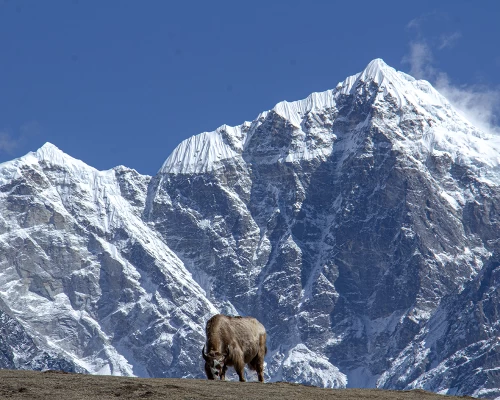
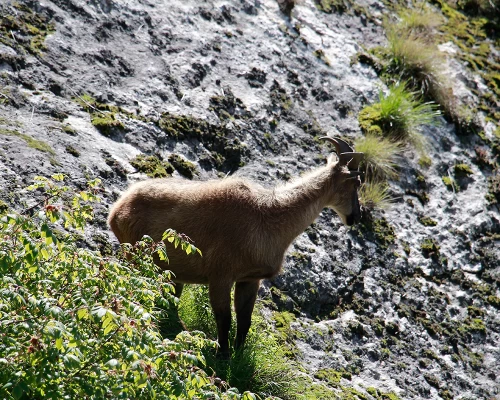
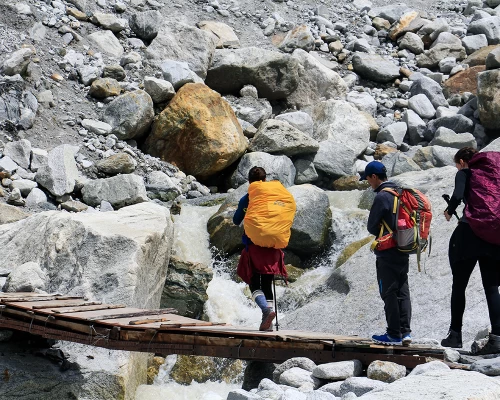
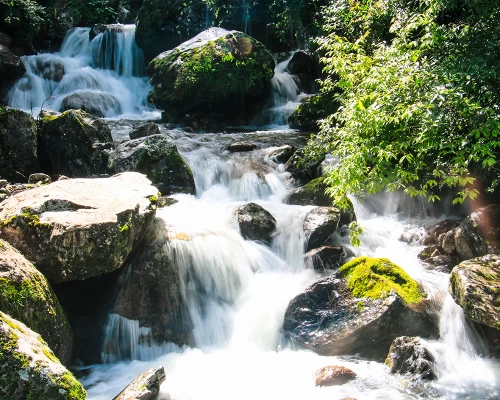
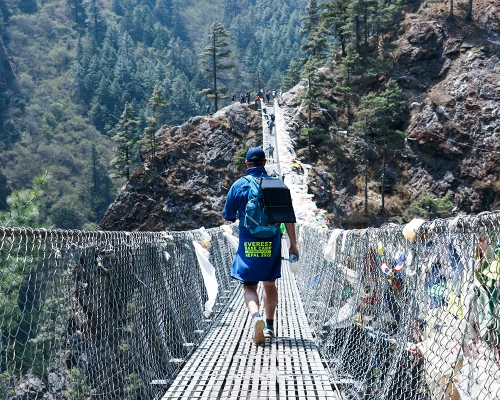

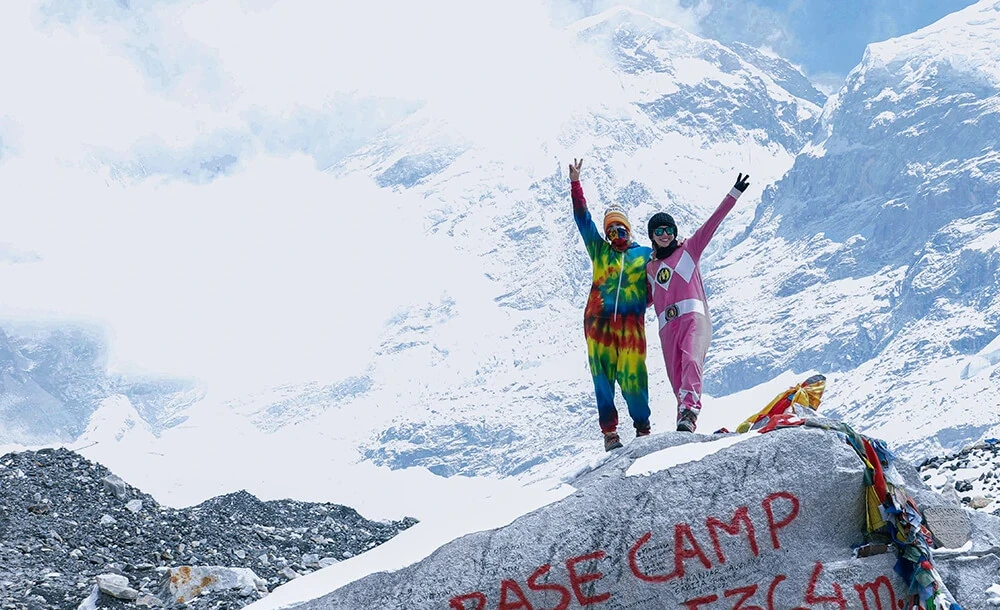

.webp)
.webp)

 based on 5 reviews
based on 5 reviews